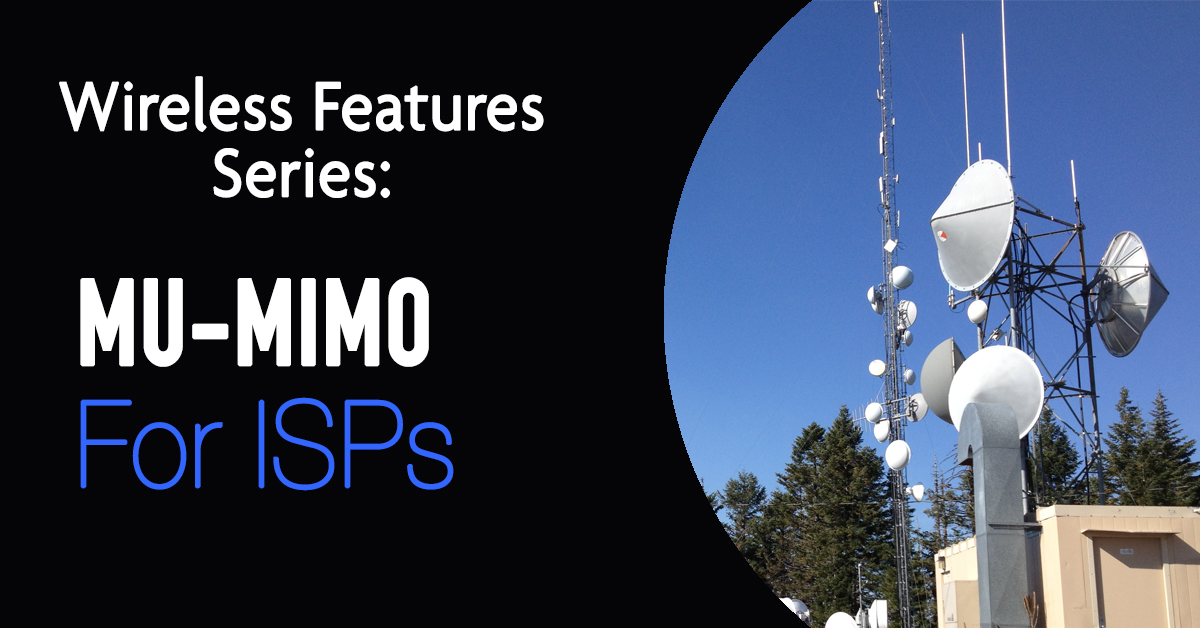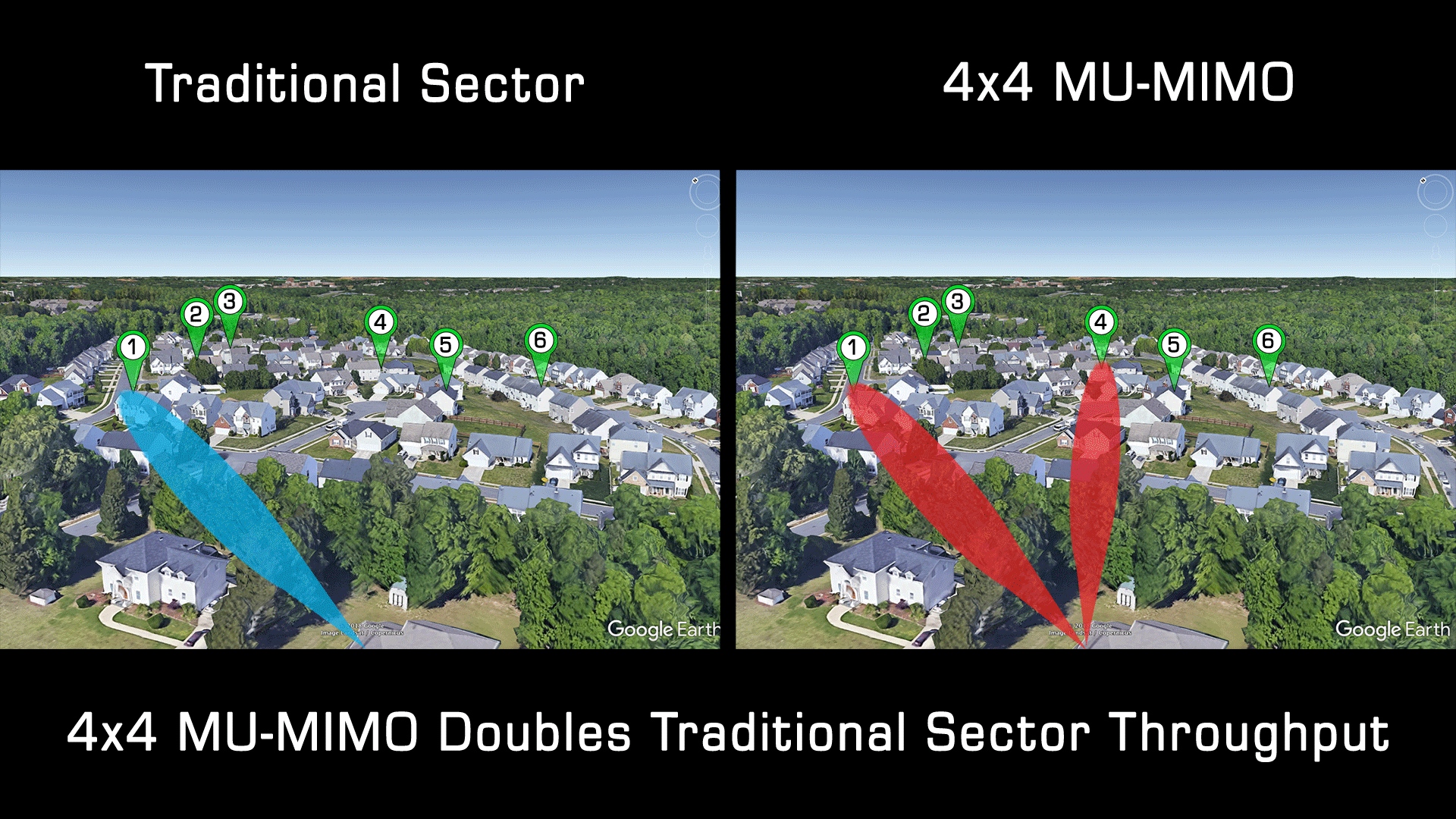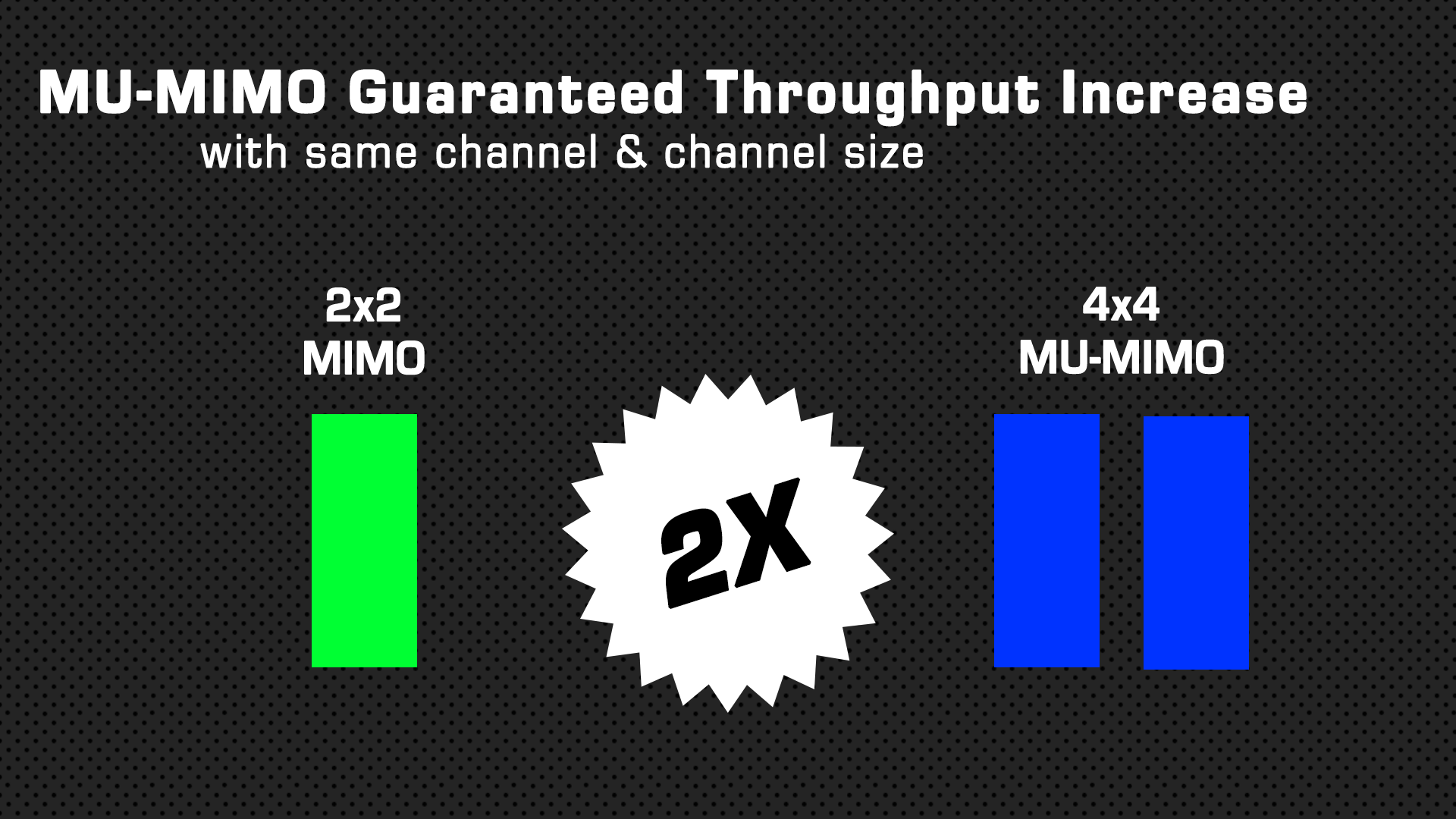For the second article of our Wireless Features Series, we decided to explore the advantages of multi-user, multiple input, multiple output technology, aka "MU-MIMO." To understand the advantages, let's first take a moment to consider consumer expectations, and the challenges wireless ISPs face in meeting those demands.
Great Expectations
Internet consumption is on the rise. In their article entitled, Broadband Internet Usage Accelerated in 2018, OpenValut reports that U.S. households consumed an average of 268.7 gigabytes in 2018. That is an impressive 33% rise from 2017 when the average consumption was 201.6GB.

Challenges to Connectivity
An ISP's unique set to challenges to delivering service can include foliage, limited spectrum, interference, weather, and the laws of physics, among others! They, in turn, expect hardware manufacturer's and software developer's solutions to not only support reliable connectivity in all their coverage areas, but also support more subscribers and/or faster speeds, in order to ultimately support their growth.
In the past, Wireless ISPs (WISPs) often relied on increasing their channel size or upgrading to equipment with higher modulation to meet increasing demands for bandwidth. However, environmental factors and interference have hindered these attempts to solve the problem. Enter the new solution of MU-MIMO.
What is MU-MIMO?
Simply put, MU-MIMO is the ability for an Access Point (AP) to communicate with multiple Subscriber Modules (SMs) simultaneously in the downlink, in the same channel, with the same channel size.

Guaranteed AP Throughput Increase
The main benefit of MU-MIMO is a guaranteed throughput increase even in noisy environments. Activating MU-MIMO on an AP will at least double your downlink throughput because MU-MIMO uses the same time frame to serve two SMs with the same throughput instead of one. If your AP is currently performing at 10 Mbps down per SM, activating MU-MIMO allows you to serve two SMs with 10 Mbps each, simultaneously. This means you are now getting a total of 20 Mbps on the downlink of your AP. Currently 4X4 and 14X14 MU-MIMO APs are available.

Where Are Current MU-MIMO Solutions?
ePMP 3000
Cambium Networks’ ePMP 3000 uses a WiFi AC Wave 2 chipset to achieve 4x4 MU-MIMO. This means that the ePMP 300 AP can communicate with 2 SMs in the downlink. The ePMP is great for any deployment and is backward compatible with all ePMP SMs.
450m
Cambium Networks’ 450m flagship AP features an integrated 14x14 90° MU-MIMO antenna. It can communicate with 7 SMs in the downlink simultaneously. The 450m is based on a proprietary chipset and is backward compatible with all the 450i SMs.
Have Questions about MU-MIMO?
The DoubleRadius team is here to help! Visit our Contact Us page now to call, chat, or email us with your questions.
